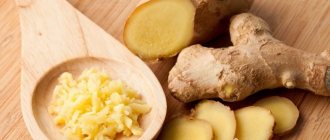General information
This vegetable has many names, including gumbo, okra and lady's fingers.
If you hear this name, it means we are talking about okra - a rather valuable vegetable crop that belongs to the Malvaceae family. Nothing is known about the homeland of this plant, but it is widespread in Africa, North America, India and the tropics. Some call its homeland West Africa, others - India. This is due to the fact that a wide variety of varieties and types of okra grow in these places. The vegetable is found in Europe, but the Arabs brought it there. It is grown in Russia and Ukraine. This became possible after the onset of noticeable warming. The number of enthusiasts growing it is very small. Okra is an annual herbaceous plant. It can grow up to 40 cm in height, but there are cases when the vegetable reached two meters. Okra has a very thick and branched stem. The leaves are drooping and light green. They are very large and seven-lobed, although there are also five. The flowers are quite large and yellowish-cream in color. They are located on stalks in the axils of the leaves. This is where the fruits are formed. Popularly, okra fruits are called capsules, due to the fact that they have a 4-8 sided shape, with seeds inside.
Okra, like eggplants, is very demanding of heat. In this regard, its cultivation is carried out in the southern regions. But it was like that before, now the situation has changed a little. Skilled gardeners successfully grow it in colder countries.
The vegetable can increasingly be seen on store shelves not only frozen, but also fresh. Recently, okra can also be found in the market. This plant is harvested from August to November.
How to choose
When choosing okra, special attention should be paid to its appearance. The pods should be 10 cm, this is the maximum length. You should buy shorter fruits. They should be bright green without any damage, moldy spots or dry areas. Buy only young and tender fruits, which should be firm to the touch. Sometimes there are varieties with a darker, even slightly reddish color. It is very easy to identify an overripe fruit by its leathery shell. Such a vegetable is very hard and fibrous and is completely unsuitable for cooking; it only spoils it.
How to store
Okra is a highly perishable product. It can only be stored for three days. If you are going to store the vegetable in the refrigerator, first wrap it in newspaper or a paper bag.
In culture
It is known that the well-known writer Anton Pavlovich Chekhov was involved in the cultivation of okra. At the beginning of the last century, he diligently cultivated vegetables on his plot.
Calorie content of okra
A dietary low-calorie product, 100 g of which contains only 31 kcal, so people who care about their weight can eat it without harming their figure.
Nutritional value per 100 grams:
| Proteins, g | Fats, gr | Carbohydrates, g | Ash, gr | Water, g | Calorie content, kcal |
| 2 | 0,1 | 3,8 | 0,7 | 90,1 | 31 |
Description
Okra (okra) is a tropical plant of the malvaceae family.
This vegetable also has two more names - gumbo and lady's fingers. In this article, we will tell you what kind of plant this is, what it looks like, as well as a lot of other useful information. Okra is a greenish, pointed, cone-shaped pod (see photo) that grows in warm climates. The vegetable can also be grown in cooler areas, but only if special cultivation methods are used.
Okra is a close relative of cocoa, cotton and hibiscus. The fruits of the described exotic vegetable have about seven edges, in which very small seeds are located. As a rule, the herbaceous annual plant grows up to 25 centimeters. The okra fruit itself has small fibers, which must be removed before eating so as not to provoke an allergy. The fruit of the plant is dark green. The overseas vegetable tastes like eggplant or asparagus.
The exact area from which the described plant originates has not yet been established. It could be Ethiopia, India or western Africa, since cultivated or wild tropical plants are very common in this part. © https://ydoo.info/product/bamiya.html Unfortunately, in our country this culture has not gained such great popularity.
The fruits of this plant contain a large amount of mucus. To remove it, you will need to add a little vinegar or tomatoes to the food during cooking.
The exotic plant is rich in a lot of useful components, including a vitamin complex and ascorbic acid. The vegetable seeds contain 20% oil, and the pods contain vitamins, proteins, mineral salts, organic acids and carbohydrates. Thanks to this content, the described plant is simply adored by people who adhere to a healthy food culture, as well as vegans.
The only problem that many inexperienced gourmets may encounter is some of the peculiarities of preparing this vegetable, but we will talk about this a little later.
Interesting facts about okra
While in Europe and Russia okra began to gain popularity quite recently, in hot tropical countries it has been famous for thousands of years. According to historians, okra was constantly present on the dinner table of Queen Cleopatra, and this Egyptian ruler was very concerned about her attractiveness and paid great attention to her diet.
There are also claims that the famous Russian writer Anton Chekhov treated okra with respect. He not only consumed okra, but also personally grew it on his plot. According to legend, it was Chekhov who gave okra one of its unofficial names - “lady fingers”.
In southern countries the product has been known since ancient times
Varieties and varieties of okra
Today there are several varieties and varieties of okra, which are very popular in the Russian Federation. Each fruit differs from others in shape and size.
What types of plants are there:
- The oak forest is low-growing. The stem of this plant grows up to 80 centimeters. The lower foliage on the stem has a five-lobed shape, and the upper foliage is dissected. The flower of this species is yellow in color and small in shape (9 centimeters in diameter). The color of the ripe fruit becomes dark green. The height of okra can vary, but on average the plant reaches 18-20 centimeters. Such a crop can produce about 8 fruits, from which it is then possible to obtain seeds for planting for the next period. Each fruit contains approximately 50 seeds.
- Lady fingers. Okra pods and seeds are completely edible. For this reason, people grow the crop to obtain a tasty delicacy from which they can prepare more than one dish. The plant grows up to 1 meter. After planting the plant in open ground and until the first fruits are received, at least 100 days pass. There are sparse hairs on the stem of the lady's finger. The fruits of this crop externally resemble capsicum, covered with fibers. To remove them, you need to wipe the fruits with a rough piece of cloth. The fruits themselves are hidden in the axil of the foliage. Interestingly, this variety is very resistant to heat and dry weather. It is possible to harvest fruits from this species twice a year, but subject to a warm climate. It is advisable to eat the slightly unripe fruit, as it contains a sticky mass used to thicken various dishes. In addition, okra fruits are added to vegetable salad, side dish or soup. This vegetable can be canned, frozen or dried. Eating this variety is useful for people on a diet and patients with atherosclerosis.
- The oak forest is mid-season. Immediately after planting the plant in the ground, at least 65 days pass until the first ovaries appear. It will take about 120 days for the seeds to appear in them. Okra of this variety bears fruit for approximately 1 month. During this time, harvesting can be carried out about 7-9 times. This variety is planted exclusively in open soil. The ovary can be eaten by people who are on a diet.
- Medium-sized pipe. The stem of this plant reaches a height of 120 to 150 centimeters. The color of the inflorescences is yellowish, and the size is up to 7 centimeters. The fruits have a greenish tint and their size is no more than 20 centimeters. To get seeds from a fruit, 10 copies are enough. The first ovaries are formed already on the 70th day after planting the crop in the ground. The seed ripening period is 125 days. This variety of okra takes approximately 35 days to bear fruit, resulting in about 9 harvests per year.
In addition to the listed varieties, there are also others that are in great demand in the Russian Federation, namely White Velvet and White Cylindrical Okra. Many summer residents prefer to plant these crops in their garden plots. This is explained by the fact that the listed varieties produce very tasty and incredibly healthy fruits.
Harvesting
Okra fruiting lasts until frost. The ovaries should be removed every three to four days, not allowing them to become overripe. Young pods 5-8 cm long are collected. The collected fruits themselves have a short shelf life, so the pods should be prepared: canned, frozen. Seeds from unripe fruits are used as a replacement for green pot in salads and canning.
If you do not collect Okra on time, the fruits become fibrous and rough, hard; they are no longer eaten.
In addition, we would like to warn you that the pods are covered with short fibers that irritate exposed skin, so you should protect your hands.
If you leave the plant for seeds, then use the first ovaries for culinary purposes, and leave the last ones until fully ripe. When the pods look completely dry, remove the seeds from the pods, clean them of plant debris, dry them and store them in cloth bags in a dry place.
Beneficial features
Okra has a lot of useful properties, thanks to which the described plant is widely used. First of all, the fruits of vegetable crops are real “pantries”, which contain a rich vitamin and mineral complex. This and more will be discussed in this section.
What are the benefits of vegetables:
- Folic acid, contained in huge quantities in fruits, is very useful to include in the diet of women carrying a child. Moreover, this substance is useful for both the expectant mother and the fetus. Vitamin B9 in its natural form, found in fruits, is much more beneficial than its synthetic counterpart.
- The presence in the culture of dietary fiber, which contains the produced mucus, normalizes glucose levels. For this reason, okra fruits can be eaten by people diagnosed with diabetes. In addition, the described vegetable has the ability to fight bad cholesterol, toxins and bile.
- Special substances found in vegetables help improve the functioning of the gastrointestinal tract. If you regularly eat okra, you can forget about constipation, bloating, and in some cases the vegetable can treat peptic ulcers. In addition, the vegetable helps increase the number of beneficial microbes and bacteria (probiotics) in the walls of the small intestine.
- The described vegetable is very useful to eat while on a diet, since it is a low-calorie product. The fruits contain substances that strengthen blood vessels. It is advisable for people with diagnosed atherosclerosis to include foods containing okra in their diet.
- Thanks to the fruits of this crop, you can cope with sore throat, depression, and chronic fatigue.
The fruits contain a lot of iron, potassium, calcium, vitamins A, B and C, as well as macro- and microelements. Moreover, the vegetable crop is a champion in terms of vegetable protein and oil content, which is in no way inferior to its olive “brother.”
The calorie content of the dietary product is 30 kilocalories. For this reason, it can be safely consumed by people who suffer from excess weight and stomach diseases. Okra can also help relieve asthma.
The content of a large number of useful components in gombo fruits allows them to be used for both health and cosmetic purposes. Various masks are prepared using okra decoctions to improve the condition of the skin and hair. Hair washed with this decoction becomes stronger and silkier. In addition, okra extract can be used on the face to combat pimples and acne.
Chemical composition of okra
Okra is very rich in nutrients. It is especially rich in ascorbic acid (vitamin C). The mucous substances contained in the pods of the plant consist of proteins and organic acids, the set of which is very diverse. The fruit pulp contains little fat. The highest concentration of fat (up to 20%) is observed in the seeds, from which oil is obtained, which is very similar in taste and composition to olive oil.
The health benefits and harms of okra are determined by its composition. Raw okra is 90% water. The dry mass of 100 g of product is distributed as follows:
- dietary fiber – 3.2 g;
- fats -0.1 g;
- proteins – 2 g;
- carbohydrates – 3.8 g;
- ash – 0.7 g.
The composition of the fruits of the plant is represented by the following B vitamins:
- Vitamin B1 – 0.2 mg;
- B2 – 60 mcg;
- B4 – 12.3 mg;
- B5 – 250 mcg;
- B6 – 220 mcg;
- B9 – 88 mcg;
- RR – 1 mg.
Other vitamins:
- Vitamin A – 19 mcg;
- Vitamin E – 360 mcg;
- Vitamin K – 53 mcg;
- Vitamin C – 21.1 mg.
In addition, the fruit contains about 200 mg of beta-carotene and approximately 500 mg of lutein. The total content of phytosterols is about 20-25 mg.
The microelement composition of the fruit pulp is as follows:
- potassium – 303 mg;
- calcium – 81 mg;
- magnesium – 58 mg;
- sodium – 9 mg;
- phosphorus – 63 mg;
- iron – 800 mcg;
- manganese – 990 mcg;
- copper – 90 mcg;
- selenium – 0.7 mcg;
- zinc – 600 mcg.
Use in cooking
Okra fruits are widely used in cooking around the world. It can be prepared in different ways. Okra is salted, pickled, canned, stewed, steamed or deep-fried, fried, and also boiled. Moreover, raw fruits in the form of a smoothie can be eaten without heat treatment. The vegetable can also be dried or frozen to enjoy this excellent product all year round.
This vegetable can serve as a substitute for zucchini, which is added to stews or ratatouille. In addition, chefs use this vegetable as a side dish or additive for soups and salads. The fruit goes well with various spices, olive oil and improves the taste of any culinary masterpiece made from this vegetable crop.
You can also eat young okra leaves. They can be added to soup or salad. The seeds of this plant are also suitable for food. They must first be roasted and then used to make a bitter drink reminiscent of coffee. Okra seeds are suitable for producing oil that has a unique aroma and taste. In addition, the seeds of a young vegetable crop can easily replace canned green peas.
You can also eat the pods of the described vegetable crop. The only negative is that they should not be stored for a long time, since the pods very quickly acquire a fibrous structure.
In terms of taste, the okra fruit resembles a kind of golden mean between green beans and zucchini. This circumstance allows cooks to use the described vegetable in various culinary dishes very widely.
Boiled or lightly fried okra can be used as a side dish or as a dressing for a first course. The vegetable goes very well with tomatoes, onions, garlic, red pepper, ginger root and various spices.
How to grow vegetables from seeds
In the middle zone, okra is grown only by seedlings. Seeds take a long time to germinate, within 6–8 weeks. If you soak them in warm water for a day before planting, they can sprout faster. In about 3 weeks.
The seeds are immediately planted in separate pots, as the plant does not tolerate transplantation.
Seed germination temperature is 21–25 °C.
When the seedlings have sprouted, care consists of proper watering. You need to water the plant very carefully, along the edge of the pot, trying not to get on the trunk and leaves. With improper watering and cold indoor air, okra is often affected by blackleg.
How to cook okra?
To have an idea of how to properly cook okra, you must first find out some of its distinctive features, which will be discussed in this section.
The appearance of this overseas vegetable vaguely resembles an unripe green pepper. Okra has fibers on the outside and a large number of seeds hidden inside. Before buying a product, it is advisable to choose a fruit that is not very large. You can give preference to such a specimen, the length of which does not exceed 10 centimeters. Otherwise, you run the risk of purchasing an old and overripe vegetable.
What are the subtleties of preparing this vegetable you need to know:
- before starting cooking, the fruit must be thoroughly washed under running water, wiped with a coarse cloth to remove unnecessary hairs, and then cut off the tail;
- During heat treatment of this vegetable, you should not use cast iron cookware so that the okra pods do not become dark;
- to prevent the vegetable from spreading during cooking, do not stir it with a spoon and do not subject it to prolonged heat treatment;
- if you want to make okra-based soup or sauce, first remove the sticky secretion that this vegetable produces;
- if you do not want the culinary dish to become viscous, then the product must first be sautéed or cut into very thin pieces, and then cooked until the sticky coating evaporates;
- Metal utensils are not suitable as kitchen utensils for preparing okra, as they may darken and deteriorate.
Thanks to the special mucilaginous substances that okra produces, it can be used to make an original soup or dressing with a thick consistency. You can prepare vegetable pods very quickly using various recipes. But it should be remembered that these components can boil over and then crumble during prolonged heat treatment. To prevent this from happening, it is advisable to add the ingredient at the very end, just before turning off the gas. After this, the dish should not be stirred for some time.
Natural lemon juice, apple cider vinegar, red bell pepper, marjoram, basil, thyme and curry best highlight the unique taste of the fruit.
Okra can be combined with a variety of food options. As a result of this “tandem”, the finished okra dish acquires a certain piquancy, but at the same time without the presence of any pronounced taste.
Where to buy and how to choose
Okra is not a very popular product, so it is not often found in regular grocery stores. But it can be found frozen. It can be pre-sliced, which is more convenient. If you buy whole frozen pods, it is better that they come with the “tails” already cut off.
Frozen Okra
Okra season is from May to September (depending on the region), during which time you can look for it at farmers' markets.
Young, small okra pods are tender and tasty. As they mature, they become woody and inedible.
How to choose fresh okra:
- pods are bright green (less often purple);
- 8-10 cm long;
- elastic to the touch, but not too hard;
- no brown spots.
Fresh okra pods
Avoid pods that have lost color or are damaged. If the okra is sticky and very soft, then things are really bad.
Large pods (from 10 cm) are coarser and require longer cooking.
Canning methods
There is more than one way to preserve this vegetable. It can be sealed in a jar as a separate dish or in combination with other vegetables.
It is advisable to remember this recommendation that for preservation it is necessary to select only those vegetables that are not overripe and were picked not so long ago. No need to jar okra that has been sitting on the refrigerator shelf for several days.
If you cut the fruit lengthwise into small pieces and place them in a jar, you can see how wonderful the vegetable looks in a glass container and resembles small stars. It is not at all necessary to preserve only the sliced fruit for the winter; you can also preserve it whole by choosing a suitable container. The only thing required is to cut off the edge of the shoot with a knife.
Before starting the process of preparing the product for the winter, you must first prepare the necessary components that you are going to preserve (in the case of combining the fruit with other vegetables). Next, you need to thoroughly wash all the vegetables, prepare and keep nearby the spices and marinade needed for each jar. The latter is cooked over low heat. The glass containers themselves must first be sterilized, and then the vegetables must be placed in jars. Pour the boiling marinade over the vegetable salad, then pour it back into the pan. This procedure must be performed several times (if required by the recipe). Immediately before rolling the jar into the container, you need to add okra, pour a layer of marinade, and then seal it with an airtight sterilized metal lid.
How and how much to store
To store fresh okra, wrap it in paper or a plastic bag and place it in the vegetable drawer of your refrigerator. The shelf life under such conditions is 3-4 days. When storing okra, mucus may appear in the okra, this is normal.
For long-term storage, the pods can be frozen, dried and canned.
To freeze okra:
- Rinse the pods.
- Carefully cut off the stem without touching the seed part.
- Blanch the okra by submerging it in a pot of boiling water. Small pods - 3 minutes, larger ones - 4 minutes.
- Immediately plunge them into a bowl of ice water.
- Cut the pods into pieces or leave them whole.
- Place in bags and freeze.
In the freezer, okra has a shelf life of up to one year.
Benefits and treatment of okra
Okra has great benefits for humans, so doctors prescribe treatment with this vegetable.
The benefits of okra became known after a number of studies. Based on their results, confirmation was obtained that the described vegetable can prevent the formation of cancer, diabetes and cataracts. Moreover, doctors advise including this exotic fruit in the diet of those who have recently undergone surgery. There is evidence that this vegetable crop is quite capable of solving the problem of male potency.
Traditional medicine very widely uses okra to prevent and combat various ailments associated with the digestive and respiratory systems. Most often, all kinds of tinctures and decoctions are made from this component.
What diseases can be treated with this vegetable:
- Colds and painful cough. To provide therapeutic treatment for the upper respiratory tract, you need to take 2 large spoons of crushed okra roots and pour 3 glasses of liquid (warm and boiled). The infusion must be left for 2 hours, and after that it should be strained. The resulting product can be sweetened with honey. You need to take 1 large spoon of the infusion approximately 8 times a day until coughs and colds disappear.
- Atherosclerosis. To cope with this disease, alternative medicine doctors prescribe patients to eat okra (about 200 grams per 7 days).
It is advisable to consume the fruit in its natural form or add it to various culinary dishes for those people who have been diagnosed with diabetes and also suffer from frequent diarrhea or constipation.
Fresh pods of this fruit contain a huge amount of vitamins and healthy components found in the food product in the form of calcium, iron, potassium, thiamine and folate. This fruit is a champion in dietary fiber and protein content.
What kind of vegetable is okra?
Okra, or okra, is a vegetable from the Malvaceae family. In Russia, you can’t find it in stores and markets very often, so it’s interesting to know what it looks like and what conditions it prefers.
What does okra look like?
The herbaceous annual okra is a plant that reaches an average height of about 50 cm. The main stem of okra is thick, strong and branched, covered with large light green leaves, five- or seven-lobed, with slight pubescence on the surface. The flowers of the plant appear in the spring almost close to the stem, in the axils of the leaves. The pedicels are very short and pubescent, and the flowers themselves are large, single, yellowish-cream in color.
Exotic okra - a vegetable with fruits in the form of pods
Okra fruits also form in the axils of the leaves. They look like elongated pyramid-shaped boxes, slightly reminiscent of green capsicums. The length of the fruits can reach 25 cm; on top they are covered with small thin hairs. Okra bears fruit from August to November, so it makes sense to look for it in stores in the fall.
We recommend reading: Benefits of bell pepper, properties
Important! On sale, the vegetable is found not only under the names of okra and okra, but also under the name gombo, edible abelmosh or “lady fingers”. In all cases we are talking about the same product.
Where does okra grow?
Under natural conditions, okra grows in India, Africa and the southern regions of North America. But it is artificially cultivated in European countries and in Russia, for example, in the Stavropol and Krasnodar territories. Growing okra is associated with certain difficulties, since exotic okra is accustomed to growing in the tropics and is sensitive to cold weather.
You can rarely find okra in stores, since in Russia it is grown only in the south
Contraindications and harm
Alas, eating such an amazing vegetable as okra in some cases has contraindications that can be harmful to health.
Large pods sometimes contain small islands on the outer surface that can be very hot. Such problem areas can only be mitigated through thermal exposure. Raw vegetables can cause itchy skin. To prevent this from happening, you need to protect your hands with nitrile gloves.
You should not cook food in cast iron containers, as during the process chemical reactions occur that affect the structure and organoleptic characteristics of the food. As a result, the color of the pods will turn dark brown.
Persons who have allergic reactions after eating this exotic vegetable should consult their doctor. If, after the examination, the doctor recommends limiting the consumption of okra, then the vegetable must be completely abandoned so as not to provoke the formation of a new allergy.
Contraindications for taking okra
Although the benefits of okra are undeniable, in certain circumstances the exotic fruit can be harmful:
- The main contraindication for okra is individual intolerance. Interestingly, an allergic reaction occurs not only when eating fruits. The fine hairs that cover okra pods can cause negative consequences.
- They should not be allowed to enter the body, and moreover, if you have sensitive skin, it is dangerous to even touch them with unprotected hands. Before eating okra, you need to take the vegetable by the stalk and rub the pod with force with a hard cloth. This will remove hair from the surface of the okra, making it safe.
Apart from individual intolerance to the fruit and allergies to hairs, there are no other contraindications for okra. However, nutritionists advise consuming it in moderation; if you eat okra in too large portions, it can cause diarrhea.
The product is unique in that it has almost no contraindications
Planting, cultivation and care
Many summer residents who want to have this overseas fruit on their plot are interested in the intricacies of planting, growing and further caring for the crop. In this section we will dwell on this issue in more detail.
The described crop with very useful qualities is quite possible to plant and grow even for a novice gardener. Okra seeds retain field germination for about 2 years. However, in our not too hot climate, they are usually not planted in open ground, but only seedlings are grown from seeds.
To grow okra you need to do this:
- First, you need to lightly treat the seeds with manganese, and then plant them in special boxes, the depth of which is no more than 30 centimeters. The containers must be filled with peat, which was previously mixed with humus.
- Seeds should be planted at a depth of 2 to 3 centimeters. This must be observed because the plant itself is of southern origin. In order to survive, the crop needs to have a fairly deep root section, since the water in the arid area where the plant comes from is very deep.
- After planting, the seeds must be watered abundantly, and after a while the containers in which they are planted should be covered with film.
- This heat-loving and light-loving vegetable crop must be kept under film at a temperature of at least 20°C on the 10th day after planting. In addition, the plant needs access to sunlight, and it is better to create artificial lighting in order for the first shoots to appear.
- Okra should be watered once every 5 days. But every day you need to remove the film for some time so that the seedlings can be ventilated.
- It is better to plant seeds in late March - early April. In this case, okra planted in open soil manages to grow 20 centimeters by mid-May.
- Try to plant lady fingers seedlings in areas with good light. The crop does not require fertilizing until flowering, but approximately in the first ten days of June, the vegetable crop will need to be fertilized once every 14 days.
Do not forget that the plant can grow very much. For this reason, small seedling bushes should be planted at a distance of 45 centimeters from each other. It is extremely important to combat weeds, which cause enormous harm to fragile sprouts in the first few weeks of growth.
Caring for Okra
During crop growth in a greenhouse and under greenhouse shelters, it is necessary to carry out periodic ventilation and ensure that the temperature does not rise above +30°C.
Feeding:
- One before flowering - with a complex of mineral fertilizers for vegetable crops;
- One at the beginning of fruiting - add potassium nitrate.
Make sure the soil is well moistened. The root of Okra is taprooted and long; the soil must be shed at least 30-40 cm.
Periodically loosen the soil in the root zone and hill up the plant a little to retain moisture.
Tall varieties should be immediately tied to a support and, upon reaching a height of 40 cm, pinch the top of the stem to improve lateral branching.
Regarding the formation of a bush, there is no unambiguous recommended method. Some people like to grow it in one stem, in which case the lateral shoots are broken off. Arguments: branches take away strength from the main stem and reduce the overall yield. Others like to shorten the crown and encourage side shoots to form for a larger harvest. Experimenting on the site is not forbidden.
To protect the plant from attacking pests, it is necessary to use insecticidal preparations before flowering. During the fruiting period, use only safe mechanical control methods - collecting leaves from pests.
During the fruiting period, if you notice signs of powdery mildew, you should absolutely not use chemicals. Spray the vegetative parts of the bush with decoctions of onion and garlic peels and nettle infusion. How else you can use onion peels, read in this article.
In conditions favorable for growth, Okra begins to bear fruit two months after planting and after 4-5 days the first harvest can be harvested. About 30-40 pods are formed on one bush.











